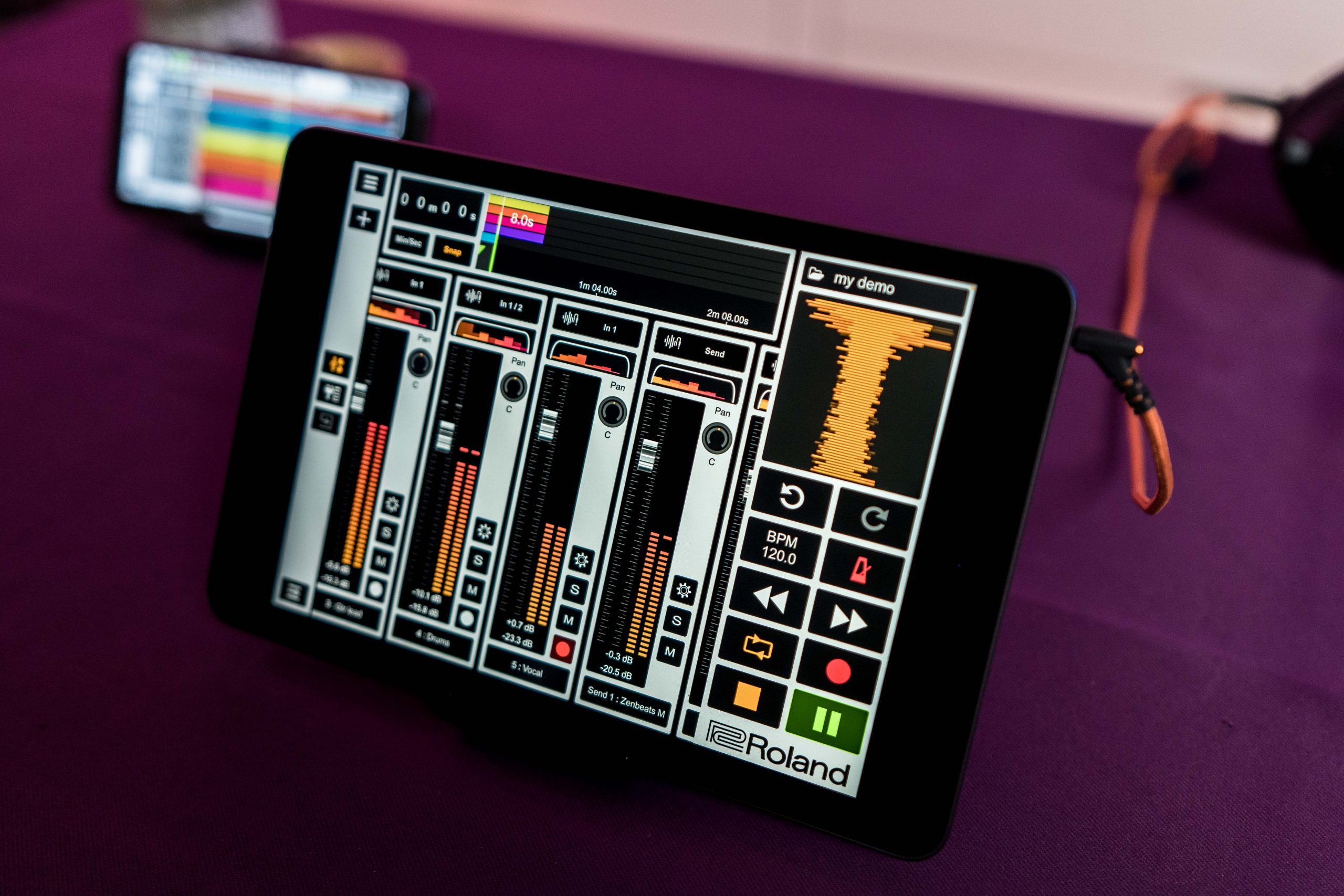Over the last twenty years, technology has revolutionized the way musicians create. Still, music educators often contend with limited budgets for their programs. This makes integrating new technologies more of a challenge. Moreover, teachers now face the ever-shifting landscape and challenges of distance learning. The new academic reality creates additional obstacles for educators with traditional music classes. Zentracker is an app that makes music recording software more accessible, providing a new tool for educators.
What is Zentracker?
Zentracker is a recording application that works across all mobile devices. It allows users to create multi-track recordings using a built-in or external microphone. Users can mix, edit, and arrange audio, plus use the 200 included audio loops. There are also sixteen built-in audio effects to use on individual audio tracks. In addition, there is the option to create sends for group audio effects. Zentracker allows the export of mixes or stems to Google Drive or OneDrive. This feature makes it easy to share with collaborators or finish projects in other programs.
"Zentracker works on most mobile devices. This makes it ideal for students and teachers to use it for music creation and collaboration."
The app has a simple layout, and the record and playback functions are easy enough for younger students to learn. It’s easy to toggle between an arrangement view and a mixer view. Furthermore, Zentracker is a free application that works on most mobile devices. This makes it ideal for students and their teachers to use for musical creation and collaboration.
Enhancing the Classroom
As students return to in-person classes, Zentracker provides a great way to explore songwriting and production. Below is an overview of how to use Zentracker in various K-12 settings.
Preschool-Elementary
The example below features a preschool class exploring different rhythmic subdivisions. They use mnemonic devices to remember the rhythms. The class took place in Italy, so the exercise uses Italian vocabulary:
- Nonna (grandmother) for quarter notes
- Papa (father) for eighth notes
- Fratello (brother) for triplets
- Mama (mother) for sixteenth notes
To replicate the demo, record each part separately and add a singing part. This class is learning to harmonize using the first five notes of major and minor scales. Try exploring the same approach and see what the students create.
"The ability to isolate tracks in real-time creates a continuous flow. Students can focus on rhythm, melody, and harmony as individual elements."
While building the loops, try soloing or muting tracks to focus on one part of the exercise. The ability to isolate tracks in real-time creates a continuous flow. Students can then focus on rhythm, melody, and harmony as individual elements. The video below illustrates how the excercise works.
MIDDLE SCHOOL
A simple exercise for middle school students is to create a 4-bar loop using their voices or found sounds. After that, they can add their melodies and words. This lesson is an effective way to teach songwriting and composition fundamentals. Here are the basic steps for students to follow:
- Choose a phrase from a book or another source and write a two-line chorus.
- Set the BPM and record a rhythm track (beatboxing, desk drumming, etc.).
- Create a melodic track such as a bass line or harmony.
- Add a melody on top.
The video below gives an example of this process in action.
High School
For older or advanced students, assign a project to write songs using built-in audio loops. After setting a tempo, encourage students to find additional loops and write a verse and chorus. It’s easy to edit and arrange in Zentracker. As a result, students can create different sections for their verses and choruses. Additionally, this exercise offers an opportunity to practice harmonization. Students can build chords with their voices or use diatonic thirds to harmonize their melodies.
"Zentracker works well for creating syncopated and polyrhythmic tracks. Students can create a loop and add percussion layers on top."
Zentracker also works well for creating syncopated and polyrhythmic backing tracks. Start with a drum loop and then add percussion layers on top. The video below offers an example of this rhythmic approach.
Zentracker + Zenbeats
Adventurous students can add audio effects, reverse audio, or time stretch audio within the Zentracker app. Once advanced students have a framework, they can export their Zentracker stems into Zenbeats. This workflow is great for capturing ideas on the go and turning them into full tracks later. Teachers can also help students transform a raw recording into a finished song in class.
"A completed composition can inspire other students and become a vehicle to expand a music curriculum."
This last step makes the composition process more interactive and collaborative. A teacher can take a loop created with elementary students and share it with high schoolers who can write lyrics. Below is an example of a track that started in Zentracker and moved into Zenbeats. A completed composition can inspire other students and become a vehicle to expand a music curriculum.
Demystifying Music for Students
Zentracker and Zenbeats provide new avenues for composition and songwriting in the classroom. The software is free and accessible, so students have the autonomy to explore their creativity and collaborate. Ultimately, learning to record and sequence ideas can demystify songwriting and build a lifelong interest in music.






